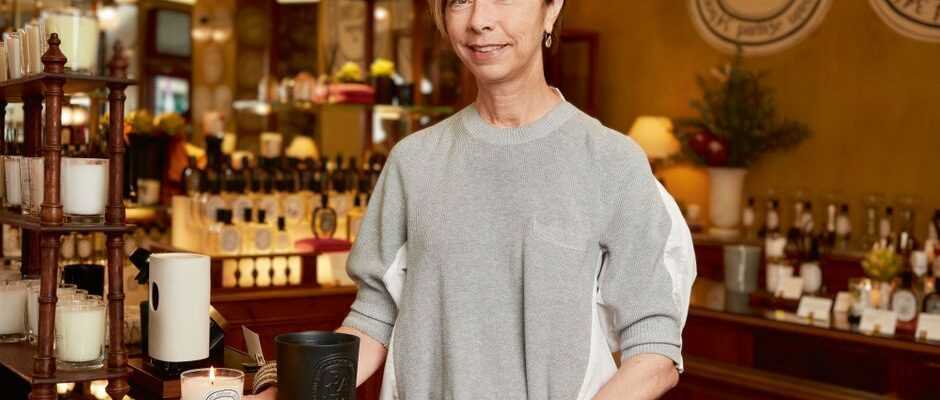Between scented candles and home fragrances, the French firm has become in fifteen years a major player in luxury and the art of living.
Everything is possible in the Paris of the early 1960s. When Christiane Montadre-Gautrot crossed paths with Desmond Knox-Leet in 1961, the duo decided to start printing furnishing fabrics. He is an artist, she is an interior designer, and soon Yves Coueslant, a theater designer, joins them in their premises at 34, boulevard Saint-Germain. “The important thing for them, says Fabienne Mauny, who now oversees the destinies of Diptyque, was to share their taste. Especially not to develop their small business. They sold their fabrics to people in the neighborhood, starting with François Mitterrand, who lived next door. »
Read also:Reading glasses: Izipizi the big picture
Le 34 has two windows allowing them to imagine two hangings, thus in diptych, thus giving a name to their adventure. Then Yves, Christiane and Desmond feel the need to diversify. “They felt that the clean prints of their fabrics weren’t what attracted passers-by the most. So they started by decorating the shop with second-hand objects, in order to create a decor, with the sole aim of having an artistic project. »
Read also:GameStop: hedge funds caught in their own trap
Desmond will be the first to bring perfumes from England, which will earn the owners the nickname of “merchants of nothing”. In 1963, the trio marketed its first scented candles: Aubépine, Thé and Cinnamon made the delight of Parisians seduced by the hand-calligraphed labels. Five years later, Eau was launched almost on the sly, but presented itself as the first gender-neutral eau de toilette. Almost forty years of creative happiness followed without ambition for expansion, let alone world conquest “with the perpetual concern for beauty”.
When Desmond Knox-Leet died in 1993, Christiane Montadre and Yves Coueslant continued the activity until 2005, without any real organization, breathing in the spirit of the times to defend their olfactory favourites. The duo ended up handing over to the Manzanita Capital fund, which placed Fabienne Mauny – formerly of Saint Laurent – at the head of Diptyque two years later. “The distribution was then still reduced, we had a shop in Paris, one in London and two in the United States. Fifteen years later, Diptyque posted sales of nearly 94 million euros in 2020, is exported to more than 50 countries through 90 brands, and employs nearly 750 people. The SME has become a luxury brand, selling as many candles as perfumes. “We had to make it known that we existed, without denying the ideals of the founding trio. So we have invested in marketing, we have also developed collaborations with artists”, without advertising – principle of the house.
If Diptyque produces everything in France, between Argenteuil, Cassis and Normandy, the brand highlights the rare (and therefore expensive) scents that it uses as a guarantee of excellence. During the first confinement, faced with the expected commercial disaster, Diptyque reinvented itself, developing click and collect. “But our stores in China hardly ever closed, and the Asian market quickly reopened. This allowed us to end this year with double-digit growth.” In 2021, Diptyque’s flame once again burned brightly. “The health crisis has shown how much people needed to create a protective cocoon, notes Fabienne Mauny. When you take the time to light a candle, it is also to allow yourself to be taken elsewhere on the basis of a perfume.” Despite its growing success, Diptyque still has audiences to conquer. If skincare turned out to be a failure, in 2022 the house will offer bathroom accessories and wallpapers. Like sixty years ago. A way to rekindle the flame…
Their bestsellers The Berries scented candle. Next come the Figuier, Feu de bois and Tuberose candles.
First market The United States, with 24 stores.
Any reproduction prohibited
